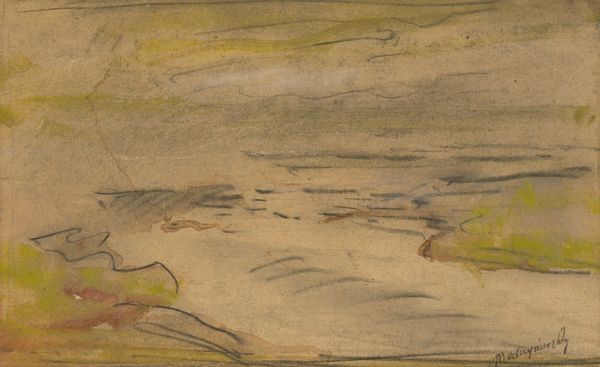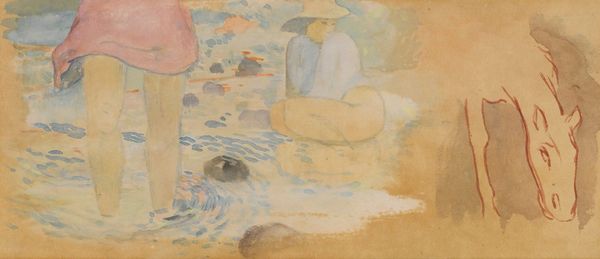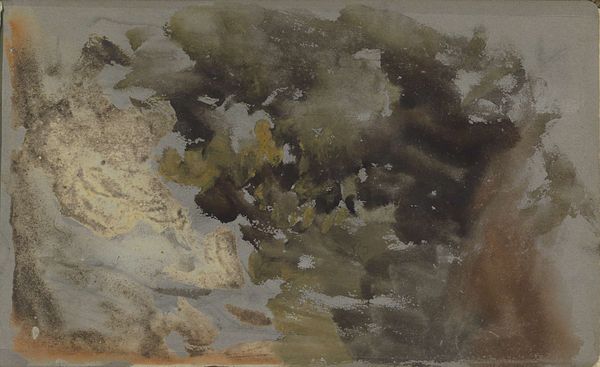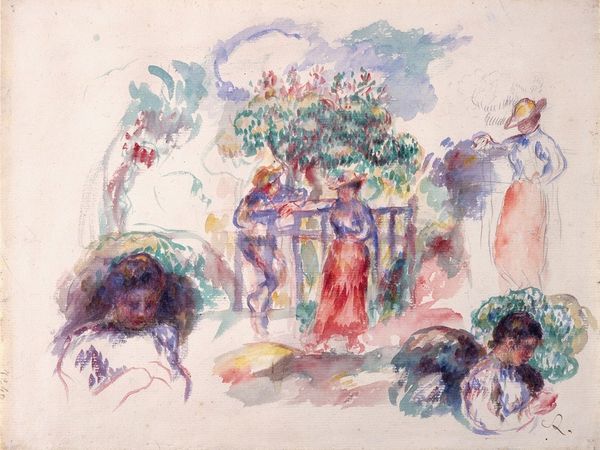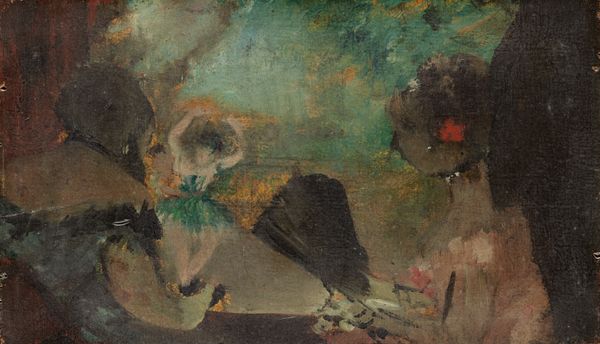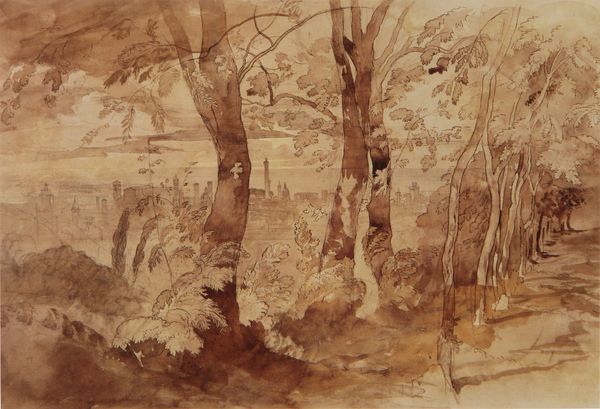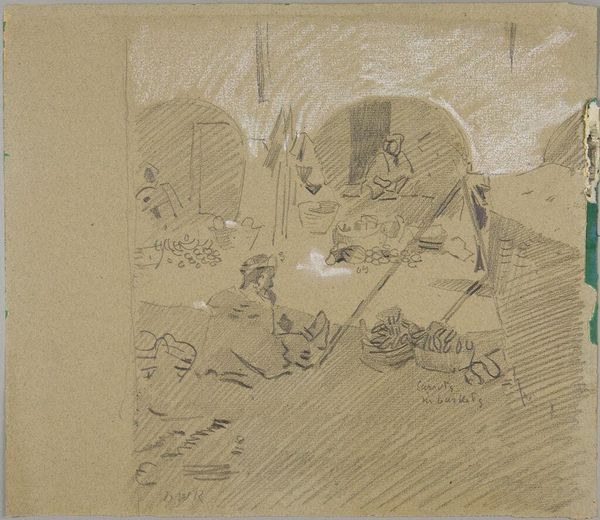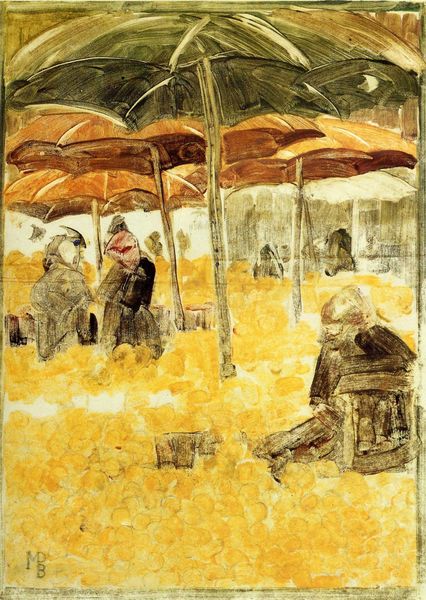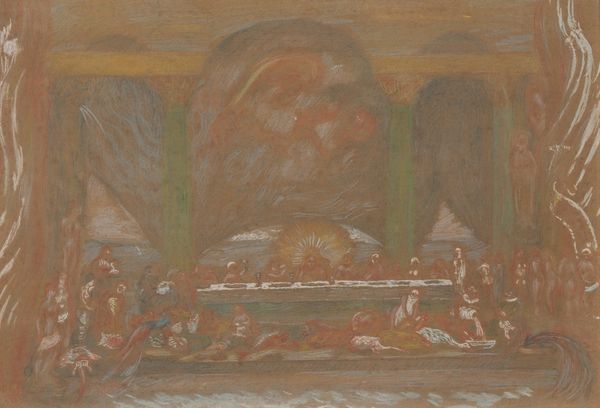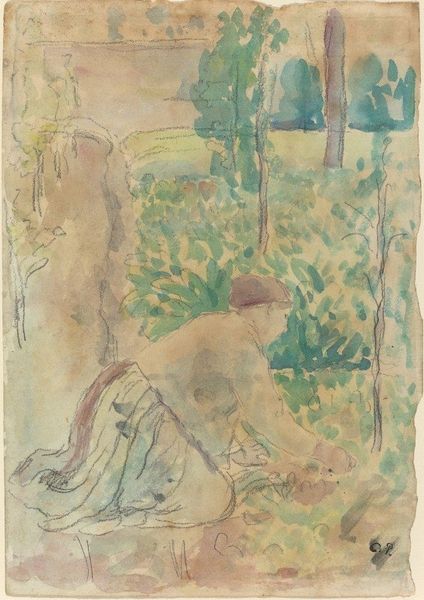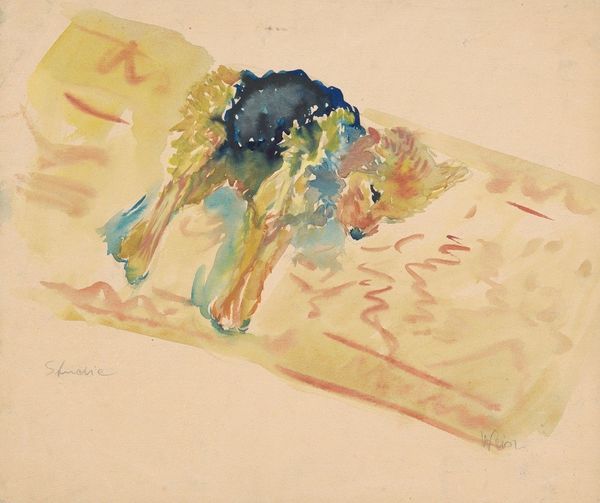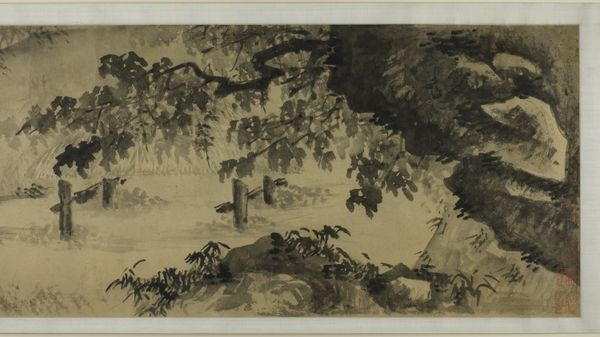
Copyright: Public domain
Editor: This is Maurice Prendergast's "Marine Park," painted in 1897, using watercolor. It's fascinating to me how he captures this leisure scene. What's striking is the raw texture; it almost feels like you can trace the movement of his hand as he laid down the paint. What do you make of it? Curator: The beauty lies in Prendergast's process. Notice how he doesn't try to hide the fact that it's made of pigment and paper; instead, he flaunts it. This isn’t just a park scene; it is a product of material and labor, like the parasols that create an economy. He is really dissolving the lines between representation and objecthood by bringing those details front and center, isn’t he? Editor: So, you are saying it's not just what's depicted, but also about how it's depicted. What are some of the specific material elements that draw your attention in that sense? Curator: Look closely. The almost visible strokes build into those complex figures. We aren’t just seeing ladies at leisure; we are seeing the materiality of leisure. We see the umbrellas as products, and the handwork within it. The flattening effect isn't just a stylistic choice; it emphasizes the object quality of the image, reminding us that this is pigment applied to paper. Even the social aspect comes back to that production: how were they able to acquire such lavish material goods that helped shape these outdoor park gatherings? Editor: It makes me think differently about Impressionism altogether. It’s not just about fleeting moments; it's also about capturing the production of those moments! Curator: Exactly! It’s about revealing the mechanics behind the appearance, which I find exciting to think about further.
Comments
No comments
Be the first to comment and join the conversation on the ultimate creative platform.
